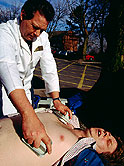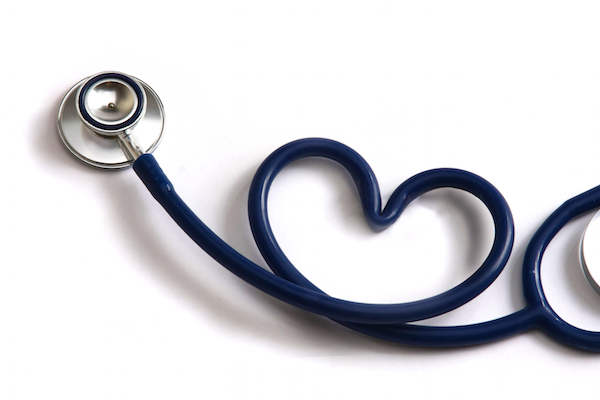
FRIDAY, April 16 (HealthDay News) — Placing automatic external defibrillators in public places across the United States and Canada could save the lives of 474 people who otherwise would die of cardiac arrest each year, researchers report.
Previous studies have found similar lifesaving results for defibrillators in more limited setting, such as casinos or airports, noted study author Dr. Myron L. Weisfeldt, chairman of the department of medicine at Johns Hopkins University.
“But this is in a much broader setting than airports or casinos, where security guards might be available,” Weisfeldt said. “This is a first report of real-world experience, how effective they are when in large cities.”
The findings will be published in the April 20 issue of the Journal of the American College of Cardiology.
The study included almost 14,000 people who suffered cardiac arrest in public places in seven U.S. cities and three Canadian ones between December 2005 and May 2007.
Researchers found public defibrillator-linked benefits similar to those observed in earlier, smaller studies. “All had survival rates of 40 to 50 percent,” Weisfeldt said. “This [study] showed that about 38 percent of these people reached a hospital alive, which compares very nicely.”
In contrast, the survival rate for people who did not get treatment with an external defibrillator, which delivers a shock to get the heart beating again, was as low as 9 percent, the study found.
That low rate was found for the 32 percent of cases in which someone who suffered cardiac arrest had cardiopulmonary resuscitation — regular pressure on the chest to keep blood flowing — but not a defibrillator shock. The survival rate was 38 percent for those who got a defibrillator shock.
The findings were similar to those of a Japanese study reported last month, which found a 31.6 percent survival rate for those given a shock from a public-access defibrillator.
In the new study, the defibrillator was used by health care workers in 32 percent of cases, by police in 26 percent of cases and by civilian volunteers in 35 percent of cases.
Extrapolating the results of the study, which included a population of 21 million, to the 330 million people in the United States produced the estimate of 474 lives saved a year–“a person and a half a day,” Weisfeldt said.
The study did not look at the cost of having automatic external defibrillators in public places across both countries, he said, but it is possible to estimate the financial feasibility of such a program.
“Roughly 200,000 of these are being sold every year, at an average cost of $2,500,” Weisfeldt said. Maintenance is not expensive, he said — “they self-check” — and training is not essential.
“The cost of defibrillators is relatively modest when you look at other safety costs,” Weisfeldt added. “Seat belts and air bags cost about $1,000 per car, and nobody says that is wasted money. The cost of defibrillators would be in the same order of magnitude.”
An external defibrillator is not difficult to use, even for an untrained person, added Dr. Jeffrey Goldberger, medical director of the Center for Atrial Fibrillation at the Bluhm Cardiovascular Institute of Northwestern Memorial Hospital in Chicago. “All they require is someone to turn it on,” he said. “The device tells you what to do.”
When defibrillator leads are placed on the chest, the device can determine whether the heart has stopped beating. “Then it tells you what you should do,” Goldberger said.
If cardiac arrest has occurred, cardiopulmonary resuscitation should also be attempted, he said. “The defibrillator is not meant to replace CPR,” he said. It is an adjunct to it.”
More information
Learn about when and how public-access defibrillators are used from the American Heart Association.

